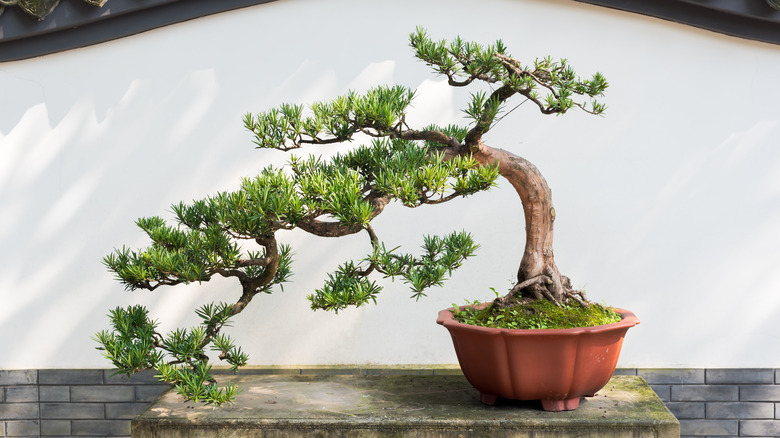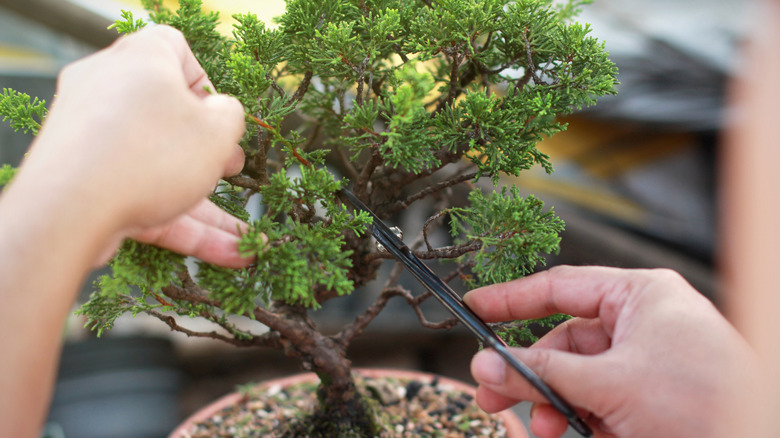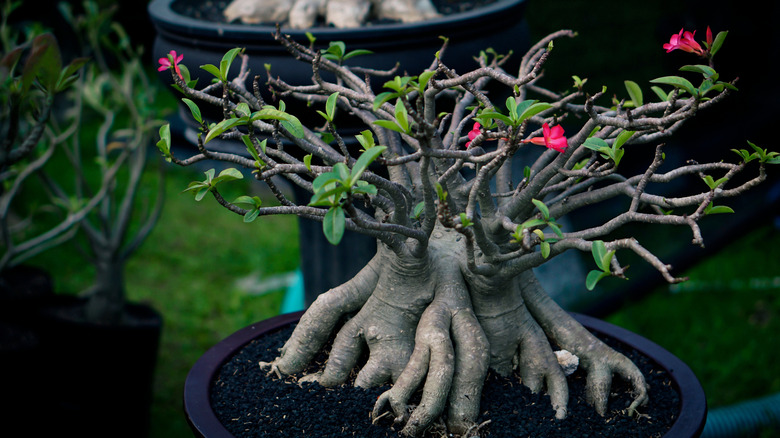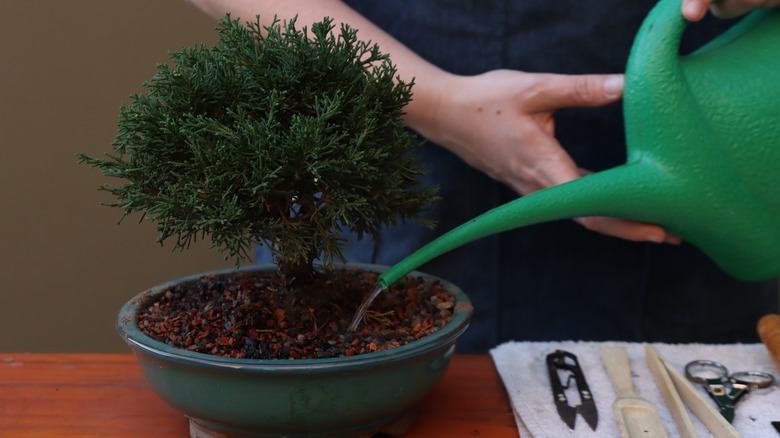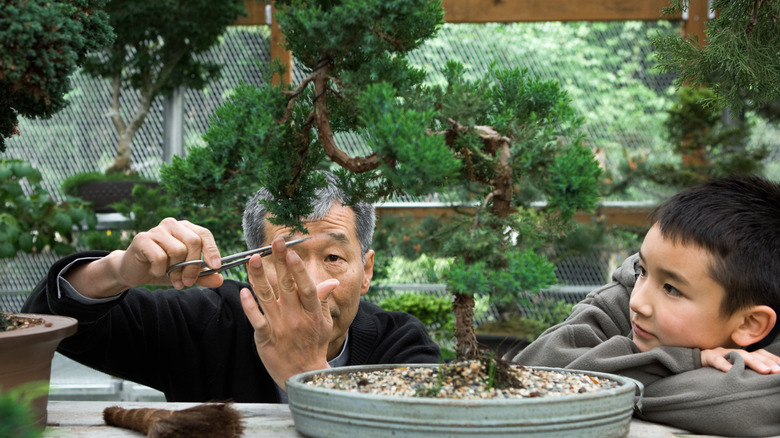Four Tips For Winter Bonsai Care That Will Have Them Thriving In Spring
Bonsai tree owners know these plants are more than just an art form with roots tracing back thousands of years in China and Japan, where they were cultivated as symbols of harmony and balance. Bonsais made their way to the United States in the late 19th century, captivating gardeners with their intricate beauty and peaceful aesthetic. While their diminutive size and lush appeal are undeniable, bonsais demand a precise care regimen—especially during winter.
Like many plants, winter poses unique challenges depending on where you live. In USDA Hardiness Zones 6 and below, freezing temperatures may wreak havoc on some trees, while in Zone 7, even occasional frost remains a concern. Therefore, it's essential to know the ideal growing zones for each particular plant and also be aware that an exposed potted bonsai will undergo the same weather conditions of a climate two zones lower than its actual environment. In other words, if you live in a Zone 7 climate and fail to protect your potted bonsai tree during the winter, it will experience conditions similar to that of a cooler Zone 5.
To care for your bonsai effectively this winter, you'll need to consider its species and your local conditions. Tropical bonsais like jade and ficus require consistently warm indoor environments, while temperate trees like junipers and pines need a dormancy period to thrive. Recognizing these needs and taking the right precautions can prevent cold damage, dehydration, and other seasonal issues, ensuring your bonsai emerges healthy in spring.
Assessing your bonsai's winter needs
We have identified the easiest bonsai tree for beginners that can live indoors or outside. However, if you don't know which type you have, the first step to successful winter care is identifying your bonsai's species and adapting your approach accordingly. Tropical species thrive in warmer climates but are susceptible to even mild frost. So, maintaining a consistent indoor temperature of at least 60 degrees Fahrenheit is critical, as well as adjusting the humidity level using humidity trays or portable humidifiers during winter. Warmer zones, closer to USDA Hardiness Zone 7, can protect against occasional frost by wrapping pots in insulating materials like burlap.
However, temperate bonsais like maples require dormancy in colder zones to stay healthy. In Hardiness Zones 6 and below, outdoor bonsais benefit from being moved to an area like an unheated garage, where temperatures remain cold but above freezing. Consider regulating the temperature to stay between 35 and 50 degrees Fahrenheit with bright, indirect light. And for those leaving their bonsais outdoors, try creating a cold frame so that they're still shielded from harsh conditions while experiencing their natural dormancy period.
How do you know if your bonsai needs special attention? Check its leaves and soil. Yellowing leaves or brittle branches often indicate stress from cold or dehydration. For soil, the finger test is simple: insert your finger about an inch deep. If it feels dry, water your bonsai sparingly. Alternatively, invest in a moisture meter for a more accurate reading.
Insulating roots to prevent freezing
There are some bold and beautiful types of bonsai trees to add a dramatic flair to your indoor space, but it takes time to learn how to grow and care for a bonsai tree. Roots are the lifeline of your bonsai, but their shallow pots make them vulnerable to winter's harshest elements, particularly in cooler climates. Freezing temperatures can damage the roots, causing stunted growth or even death. But you can prevent disaster by insulating your bonsai's roots. One reliable method is to bury the pot in the ground. Dig a hole in a sheltered area and position the pot so the soil line matches the ground level. Cover the base with mulch such as straw and leaves, which acts as a natural insulator by trapping warmth and moisture. This method is particularly useful where snow provides an additional insulating blanket.
If burying isn't an option, why not wrap the pot with bubble wrap or burlap? Alternatively, frost blankets or horticultural fleece can be draped over the entire plant for added protection during cold snaps. This creates a barrier against sudden temperature drops. For those of us in extremely cold climates, create an outdoor shelter, like a protective cold frame. Combining insulating materials and wind barriers will help to mimic the bonsai's natural habitat. In addition, placing your bonsai on the leeward side of a wall or your house will help to protect it from frigid winds.
Mastering watering and humidity in winter
It's easy to overwater your bonsai in the winter, thus leading to root rot. Adjust watering frequency based on the species and environment, and if needed, use a moisture meter. A good rule of thumb is to remember that it is better to have well-watered, well-drained plants than waterlogged or dry ones. Remember that when watering your trees, do not use cold water to avoid shocking the roots, especially in cooler zones where soil temperatures drop below optimal levels.
When overwintering a bonsai indoors, humidity is another crucial factor. To counter this, place a humidity tray filled with pebbles and water beneath the pot. Ensure the pot sits above the waterline to prevent root rot. Alternatively, use a portable humidifier to maintain indoor humidity so the plant remains comfortable and does not dry out.
Timing is key when watering outdoor bonsais. Avoid watering in the late afternoon or evening to prevent water from freezing on the surface overnight. This gives your tree time to absorb the moisture before the evening when the lack of sunlight could influence its absorption rate. On colder evenings, unabsorbed moisture could even freeze and cause the temperature of the whole plant to drop. So, plan how to check and maintain a watering schedule (which would depend on your area's temperature) for your bonsai.
Be careful before pruning your bonsai for winter
Generally, you want to keep those pruning shears away from your bonsai during winter. It could stress your tree and make recovering more difficult if it encounters a harsh winter. If you do need to maintain your tree by taking off dead leaves and branches, try to shape it before it gets too cold, ideally in the fall. Pruning is essential for maintaining your bonsai's shape and health and improving its circulation, which will, in turn, discourage the growth of diseases, but it does require the right tools and techniques. Treat your tree with a fungicide so that it stays healthy throughout winter.
While there is an unexpected fishy fertilizer that will help your bonsai tree thrive, but using it when the plant is dormant is not the best practice. While it may seem like it's a good idea to fertilize your bonsai for winter, it is not recommended as it promotes growth when the plant is entering dormancy. It is better to remove the crust of fertilizer that may be sitting on the top of your soil so that your soil can better absorb moisture. Replace the top layer with soft soil so it is easier to water your plant during the cooler months. Whether you're in a snowy region or a milder zone, these practices set the stage for a lush, vibrant bonsai come spring.
